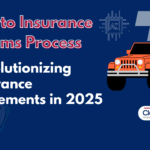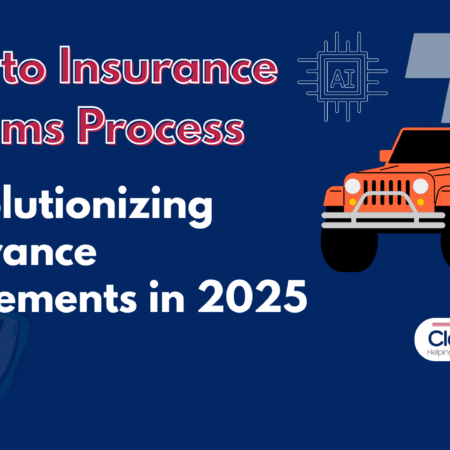If you’ve recently been in a car accident or experienced vehicle damage, chances are you’ve already filed a claim with your insurance provider. But what comes next? One of the most common questions drivers ask is: how to check the status of your auto insurance claim online in the U.S. and how to do it quickly, accurately, and without getting stuck in confusing red tape.
In today’s fast-paced digital environment, understanding how to track your auto insurance claim online step-by-step is not just helpful it’s essential. Whether you’re dealing with minor property damage, bodily injury, or a total vehicle loss, being able to check your claim status online can save you time, reduce stress, and help ensure you get your payout or repair authorization without delay.
Long gone are the days of waiting on hold for a claims representative or wondering whether your documentation was received. Leading auto insurance companies across the United States now offer user-friendly web portals and mobile apps that allow you to track the progress of your car insurance claim in real time, 24/7. These tools are especially helpful when you’re trying to coordinate vehicle repairs, rental cars, or medical reimbursements while recovering from an accident.
However, many drivers especially those filing a claim for the first time are still unsure how to use these systems effectively. Questions like “How do I know if my auto insurance claim is approved?” or “Why is my claim taking so long?” are more common than you think. That’s why learning how to check the approval status of your car insurance claim online in the U.S. is so important. The better you understand the process, the more empowered you are to make informed decisions and respond to any delays or additional requests from your insurer.
This guide is written for drivers across the U.S. who want a clear, actionable, and fully detailed explanation of how to track their car insurance claim online, including specific steps based on current digital tools used by popular insurers. Whether you’re insured by GEICO, State Farm, Progressive, Allstate, or a regional carrier, this article offers universal strategies that apply to nearly all online claim platforms.
By the end of this resource, you’ll know how to:
- Log into your insurance provider’s online portal or mobile app
- Locate and interpret your auto insurance claim status
- Understand what different status updates mean
- Take action when additional information is requested
- Follow up efficiently to avoid unnecessary delays
If you’re searching for how to view your insurance claim progress online in the U.S., or want to know how long it takes for a car insurance claim to be processed and approved, you’re in the right place.
How to Check the Status of Your Auto Insurance Claim Online in the U.S.
In today’s digital age, managing your auto insurance claims has never been easier. Thanks to online portals, mobile apps, and real-time updates, policyholders can now check the status of their claims from the comfort of their homes. But how exactly do you do it? In this article, we’ll walk you through the complete step-by-step process on how to check the status of your auto insurance claim online in the U.S., answer commonly asked questions, and provide expert tips to help you navigate your claim process more efficiently.
Step-by-Step Guide: How to Check the Status of Your Auto Insurance Claim Online in the U.S.
Step 1: Gather Claim Information
Before logging into any online portal, make sure you have the following information on hand:
- Claim number
- Policy number
- Date of the accident
- Your login credentials (if you’ve registered online)
Step 2: Visit Your Insurance Provider’s Website or Mobile App
Most major insurance companies like GEICO, State Farm, Progressive, and Allstate have customer portals and apps. Go to the official website or open the app and locate the “Claims” section.
Step 3: Log In to Your Account
You’ll need to sign in using your registered email or user ID and password. If you haven’t created an account, you can usually register using your policy number and some personal identification details.
Step 4: Navigate to ‘Claim Status’ or ‘Track Claim’
Once logged in, find the dashboard or menu item labeled “Claim Status,” “Track My Claim,” or “View My Claims.”
Step 5: View Detailed Updates
Here you’ll see a timeline of the claim, including:
- Claim submission confirmation
- Review stage
- Adjuster’s comments or requests
- Approval or denial status
- Payout or settlement date
Step 6: Upload Additional Documents (If Required)
Some claims may require additional documents like repair estimates, medical records, or police reports. Upload them directly through the portal.
Step 7: Communicate with the Adjuster
Most portals allow direct messaging with your claims adjuster. Use this feature to ask questions or respond to requests.
How Do I Know If My Auto Insurance Claim Was Approved?
Once your claim is reviewed, your insurer will notify you through:
- Email updates
- Status change in your online portal
- SMS (if enabled)
- Direct call from the claims adjuster
The status will typically read as “Approved”, “Closed with Payment”, or “Settled.”
How Long It Takes for Car Insurance Companies to Pay Out in the U.S.
In most straightforward cases, car insurance companies in the U.S. typically pay out claims within 7 to 30 days after the claim is approved.
Here’s how the average timeline usually breaks down:
| Claim Stage | Estimated Time-frame |
|---|---|
| Claim filing | Day 0 |
| Initial review by adjuster | 1–5 business days |
| Damage assessment | 3–7 business days |
| Approval or denial decision | Within 10–15 business days |
| Final payout (if approved) | 5–10 business days after approval |
Total Time from Filing to Payout: Typically 2 to 4 weeks(More complex claims may take 30–60 days or longer.)
Delays often arise due to missing documentation, police reports, or disputed liability. If your claim is simple and all paperwork is in order, you could have your money within a week. For more complex cases, stay involved, follow up online regularly, and don’t hesitate to escalate if the process drags beyond legal deadlines.
See your state’s claim handling laws here

How to Follow Up on a Pending Car Insurance Claim Online in the U.S.
After filing a car insurance claim, waiting for updates can feel frustrating especially if your vehicle is undrivable or you’re depending on a quick payout. If your claim seems stalled or you’re unsure of its progress, knowing how to follow up on a pending car insurance claim online in the U.S. can help you avoid unnecessary delays and get the resolution you need faster.
Here’s a complete breakdown of the best ways to follow up on a car insurance claim online, including tips that work for most major U.S. insurance providers.
1. Log into Your Insurer’s Online Portal or Mobile App
Most insurance companies now offer digital platforms where you can manage and monitor your claims. Start by:
- Logging into your account via the official website or app
- Navigating to the “Claims” section
- Selecting the specific claim in question
Look for any status updates such as:
- “In Review”
- “Awaiting Documentation”
- “Adjuster Assigned”
- “Pending Approval”
If there’s no recent update or the claim hasn’t moved for several days, it’s time to follow up.
2. Use the Built-In Messaging or Contact Tools
Most online claim dashboards provide built-in communication tools:
- Secure messaging systems: Send a direct message to your claims adjuster
- Request status updates: Use the “Request Update” button if available
- Live chat features: Available on some mobile apps and websites
Be polite but assertive. Ask:
“Hello, I’m following up on claim #12345678. Could you please provide a current update on the status and let me know if any additional information is required from my side?”
3. Upload Any Missing or Requested Documents Promptly
If your online dashboard shows “Pending Documentation,” this is often a reason for delays. Common missing items include:
- Photos of the damage
- Police report
- Repair estimate
- Medical receipts (if applicable)
Upload any requested files directly through the claims platform or use secure email links provided by your insurer.
4. Use Claim Reference Numbers When Communicating
Whether you’re messaging through the portal or sending follow-up emails, always reference your:
- Claim number
- Policy number
- Date of the incident
This speeds up the response time and helps your adjuster locate your file more easily.
5. Set Up Notifications for Real-Time Updates
In your account settings:
- Enable email alerts, SMS notifications, or in-app push notifications.
- Some platforms allow you to receive an update whenever your claim moves to a new stage, preventing you from constantly logging in to check manually.
6. Check Claim Notes or Adjuster Comments
Some insurers allow you to see internal notes left by your adjuster. These can reveal:
- Review timelines
- Pending approvals from supervisors
- Notes on whether a third-party is being contacted
This feature helps you understand where your claim stands without needing to call.
7. Escalate the Issue Online If There’s No Progress
If your claim has been pending for over 15–30 days without movement and no valid reason is provided:
- Look for an “Escalate Claim” or “Request Supervisor Review” option in the portal
- You can also submit a formal complaint through your insurer’s online grievance form
Still no resolution? You may file a complaint with your state’s Department of Insurance:
8. Use the Insurer’s Mobile App for Faster Access
Most major insurers have mobile apps with faster access to:
- Live chat agents
- Claim status updates
- Notifications and document uploads
Examples include:
- GEICO Mobile
- State Farm Mobile App
- Progressive’s Snapshot or app dashboard
- Allstate Mobile
These apps are optimized for mobile claims management and usually provide faster access than desktop platforms.
9. Check for Automated Assistant or Chatbot Tools
Some insurers use AI-powered chatbots (like GEICO’s “Kate” or Allstate’s “Abie”) to give instant updates or initiate live chat with claims staff.
You can ask:
- “Can you tell me the current status of claim #123456?”
- “Is my claim still under review?”
- “What documents are still needed for my claim?”
These tools offer instant support without long wait times.
10. Keep a Log of All Follow-Ups
Keep track of:
- Dates and times of your messages
- Adjuster names
- Screenshots of messages or status pages
- Any promised timelines
Tip: Keep a log of your communications for reference.
How Long Does It Take for a Car Insurance Claim to Be Approved?
Once your insurer has all necessary information, it generally takes:
- 3–10 business days to approve standard auto claims.
- Up to 30 days for more complex claims (e.g., injury claims or disputed accidents).
Most states have regulations that require insurers to respond within a specific time frame (typically 15 to 30 days after receiving all documents).
Also Read: 7 Most Common Reasons Why Car Insurance Claims Are Denied : Expert Tips to Get Approved
How to Know if Your Car Insurance Claim Is Denied or Delayed in the U.S.
After filing an auto insurance claim, one of the biggest concerns for most drivers is whether their claim will be approved, denied, or delayed. If you’re unsure where your claim stands, it’s critical to learn how to know if your car insurance claim is denied or delayed, especially when relying on it for repairs, medical bills, or a replacement vehicle.
Understanding the signs of a denied or stalled claim can help you act quickly, avoid unnecessary stress, and even appeal the decision when appropriate.
✅ Signs That Your Auto Insurance Claim Is Delayed
Delays don’t always mean something is wrong, but they can be frustrating—especially if you’re waiting on a payout or repair approval. Here’s how to identify whether your claim is delayed:
No Status Change in the Online Claims Portal
- If your online portal or mobile app has shown “In Review” or “Pending Adjuster” for more than 10–15 business days, your claim may be stalled.
- Status updates should normally occur within a few business days after filing, especially if all documentation has been submitted.
Lack of Communication from Your Claims Adjuster
- If the adjuster hasn’t responded to messages, calls, or emails within 5–7 business days, this can indicate a delay.
- Most insurers are legally required to acknowledge and begin investigating a claim within a certain number of days (varies by state, usually 10–15 days).
Requests for More Documentation Repeatedly
- If your insurer keeps asking for new documents after you’ve submitted everything they originally requested, this could be a stalling tactic or a sign of miscommunication between departments.
No Payment or Repair Approval Within Standard Timeframes
- In the U.S., most straightforward auto claims should be resolved within 30 days.
- If you haven’t received a payment or repair authorization within that period, it’s time to follow up.
❌ Signs That Your Car Insurance Claim Is Denied
Knowing when a claim has been officially denied is just as important. Here’s how to tell:
You Receive a Written Notice of Denial
- U.S. insurers are legally required to send a written notice explaining why a claim is denied.
- This notice may come by email, postal mail, or through your online insurance dashboard.
- It should include:
- The specific reason for denial
- Relevant policy language or exclusions cited
- Information about your right to appeal
Your Online Claim Status Says “Denied” or “Closed Without Payment”
- Check the online claim dashboard. If the status is listed as “Denied,” “Claim Closed,” or “Not Covered,” that’s confirmation.
- Some platforms will also include denial reasons or links to appeal forms.
Repair Shops or Medical Providers Inform You
- In some cases, you may find out your claim was denied when:
- A body shop says your insurance declined payment
- A hospital or clinic tells you the insurer won’t cover your bills
- Always verify through your insurer’s website or by contacting your adjuster directly.
No Response After 30–45 Days
- If your claim is sitting with no action and no communication after 30–45 days, it’s possible it was silently denied or forgotten.
- You can confirm by sending a formal request for a written decision or contacting the insurer’s customer service.
Common Reasons Why Car Insurance Claims Are Denied or Delayed
Understanding the why can help you fix the issue or prevent it in the future:
| Reason for Denial | Reason for Delay |
|---|---|
| Policy exclusion (e.g., intentional damage, racing) | Incomplete documentation |
| Lapsed or inactive insurance policy | Adjuster backlog or staffing issues |
| Driver was excluded under policy | Disputes over liability or fault |
| Fraud suspicion or misrepresentation | Waiting on third-party responses |
| Missed claim filing deadline | Natural disasters causing claim surges |
What to Do If Your Claim Was Denied or Delayed
If you believe your car insurance claim has been unfairly denied or unreasonably delayed, here are the steps you can take:
✅ If Delayed:
- Follow up online through secure messaging or live chat
- Call your adjuster and ask for a clear timeline
- Request escalation to a supervisor if no movement occurs
- Submit missing documentation (double-check their requirements)
❌ If Denied:
- Request a copy of the denial letter
- Ask for a detailed explanation, including the exact policy section
- Gather evidence that supports your case (photos, repair estimates, police reports)
- File an appeal (most insurers allow you to appeal in writing or online)
- Contact your state’s Department of Insurance if you suspect unfair denial:

How Can I Speed Up My Insurance Claim?
Speeding up your auto insurance claim involves being proactive. Here’s how:
- Submit complete documentation up front (photos, police reports, repair estimates)
- Respond quickly to adjuster queries
- Use online platforms for faster communication
- Choose preferred repair shops recommended by your insurer to avoid further inspections
- Stay organized and follow up regularly
Do Insurance Companies Pay You Directly?
It depends on the type of claim:
- Vehicle Repairs: Payment may go directly to the repair shop (if pre-approved).
- Total Loss: Payout is usually sent to you or your lienholder.
- Medical Claims: Payments can go to the hospital or directly to you, depending on the policy and state.
Always check with your insurer how and when payments are made.
Tips Before Filing an Auto Insurance Claim Online
- Document Everything: Take clear photos of the damage, scene, and all vehicles involved.
- Get a Police Report: Especially for accidents involving injuries or multiple parties.
- Check Your Coverage: Know what’s covered and what’s excluded under your policy.
- Report Quickly: Most insurers require you to report the incident within 24–72 hours.
- Use the Official Channels: Avoid submitting claims through third-party apps or unverified links.
- Review Your Deductible: Know how much you’ll be responsible for before repairs start.
Special Conditions or Laws in Different U.S. States for Filing Auto Insurance Claims
Different states have varying regulations regarding insurance claims. Here are a few examples:
No-Fault States (e.g., Florida, Michigan, New York)
You must file claims through your own insurer, regardless of who’s at fault. You’re required to carry Personal Injury Protection (PIP).
Also Read: No-Fault Insurance Deductibles: Who Pays What in a Car Accident?
Fault-Based States (e.g., Texas, California)
You can file a claim with the at-fault driver’s insurer, or through your own policy and seek subrogation later.
Time Limit to File a Claim
Most states have statutes of limitations ranging from 1 to 3 years after the accident to file a claim or lawsuit.
Comparative Fault States (e.g., Illinois, Georgia)
You may still be eligible for compensation even if you’re partially at fault.
Mandatory Claim Reporting
Some states require you to report accidents that cause injury or damages over a certain dollar amount (e.g., $1,000 in California).
Additional Tips for Navigating Online Claims
- Enable Notifications: Most portals offer SMS or email notifications for updates.
- Download Copies: Save digital copies of submitted forms and communications.
- Escalate When Needed: If your claim is delayed or denied unfairly, escalate to a supervisor or your state’s Department of Insurance.
- Consider a Public Adjuster: For large claims, hiring a licensed adjuster may ensure fair payout.
Conclusion
Filing and tracking your claim doesn’t have to be stressful. By understanding how to check the status of your auto insurance claim online in the U.S., you can stay informed, avoid delays, and ensure a smoother claims experience. Use your insurer’s digital tools, keep thorough records, and be proactive in your communication. Whether you’re dealing with a simple fender bender or a total loss, knowing the process and your rights makes all the difference.
For the latest updates or to file a complaint, always refer to your state’s Department of Insurance or visit NAIC.org.











